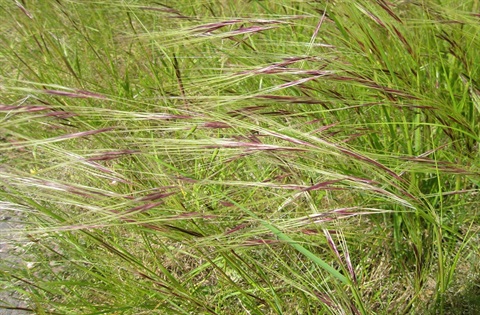
Chilean Needle Grass (Nassella neesiana) is a perennial tussocky grass that grows in clumps over 1 metre tall and 1.5 metres when in seed. It is a serious agricultural weed and a threat to native ecosystems. Chilean Needle Grass (CNG) can displace palatable pasture species reducing productivity. It is nearly impalatable once in the reproductive stage and the panicle seed can readily attach to stock, particularly sheep, with it's presence in wool downgrading quality of fleece. CNG sharp seeds can burrow into the skin of stock, and sometimes muscle, and may cause ulcerations in the mouth. CNG out-competes native grass species threatening native grasslands and once established seed banks can be difficult to manage.
CNG is known to occur within Murrindindi Shire and Landowners and Council each have a part to play to contain and control this dangerous weed.
What is Council Doing?
Council has been actively trying to contain and control the spread of CNG on Council managed land for the last few years.
CNG is present on some Council roads and reserves including the rail trail between Molesworth and Homewood. CNG is also present on Department Transport main roads such as the Goulburn Valley Highway and Melba Highway. In the past, treatment has consisted of spot spraying roadsides and reserves with Glyphosate, a known herbicides suitable for treatment.
Despite consistent spot spraying, CNG is still persistent. Council will be using another herbicide this year, Flupropanate, in addition to Glyphosate. Flupropanate can kill the seedbank as well as the plant and reduce reinfestation.
Flupropanate is fully registered for control of CNG. It is a slow acting herbicide, absorbed through plant roots and can take between 3 months and 12 months after application for plants to die, depending on weather conditions. It has a long residual life meaning it remains present in the soil to prevent germination of seed in CNG and other plants. To reduce the risk of ongoing residue and possible resistance to this chemical, Flupropanate is only used every 2-3 years and is applied as a spot spray, not a broad application.






